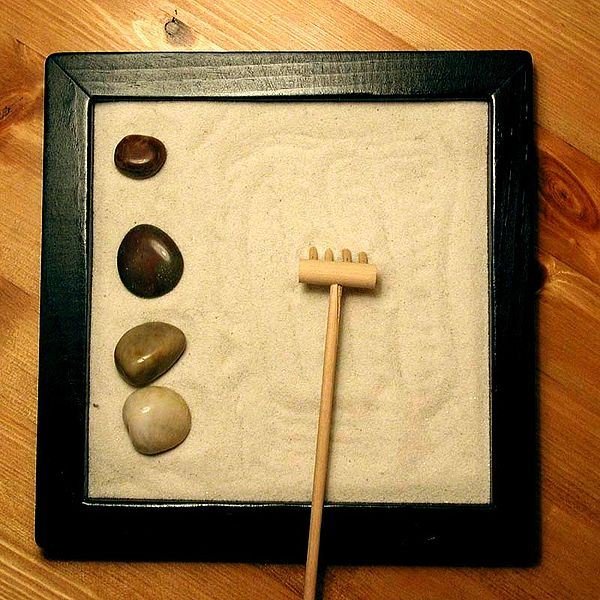Tabletop Zen Garden
A tabletop Zen garden, also referred to as a Japanese rock garden, is a small rock garden created primarily from rocks and sand. Other natural elements, such as ornamental trees and grass, can be added. They symbolize tranquility. These are easy to make and will not take up any more room than a magazine.
What is a Zen Garden?
A Zen garden encourages a Zen-like (tranquil) atmosphere and meditation. Zen refers to a state of enlightenment and introspection achieved by deep meditation. The sand is raked every day in an artful manner in patterns that induce the ripples of the sea.
Benefits of a Zen Garden
A Zen garden is a meditation tool. When meditating and using a Zen garden a person becomes relaxed, enlightened, calm, and tranquil. They will experience an open mind and an increase in concentration.
Step One
A frame needs to be created to contain the elements of a tabletop Zen garden. Any type of wood will work, but sturdy woods like oak are preferred. Cut the wood to size with the edges being cut at an angle like the angles of a picture frame. Stain or paint each of the four pieces of wood. Once the paint is dry, nail the four pieces of wood together to complete the frame.
Step Two
Attach plastic to the back of the Zen garden frame. This will keep the contents inside so that sand and the other elements do not end up all over the table.
Step Three
Fill the frame with sand. Any sand will work, but basic sand or white sand are preferable. The sand should be spread as evenly as it can be spread.
Step Four
Choose rocks in a variety of shapes, colors, and textures. For the best effect, these rocks should be placed partially submerged in the sand and off-center to either side.
Step Five
Though sand and rocks are the primary components, other items can be added. Such items include natural items made of rock, wood, and vegetation. The types of vegetation that can be added includes small Bonsai trees, different types of grasses, and flowers. It is important for all vegetation to be real and not fake or synthetic. Statues or other similar items can be added as well. Many items can be added, but it is very important to not clutter the Zen garden because it is supposed to be simple and peaceful.
Step Six
Before enjoying your tabletop Zen garden, ensure that the feng shui is in line with your karma and darma. If there is an imbalance in this, major issues can occur like sending the karma you receive into a yin yang whirlwind. If you are not a feng shui expert, it is a good idea to consult one to ensure everything is in line.
Disclaimer
Please read this disclaimer regarding the information contained within this article.
Resources
A Japanese Garden. (2003). A Moment of Peace and Serenity. Retrieved on February 24, 2010 from A Japanese Garden: https://www.a-japanese-garden.com/
Bowdoin College. (2008). The Japanese Garden. Retrieved on February 24, 2010 from Bowdoin College: https://learn.bowdoin.edu/japanesegardens/
Image Credits
Tabletop Zen Garden: Raul654 – Wikimedia Commons
